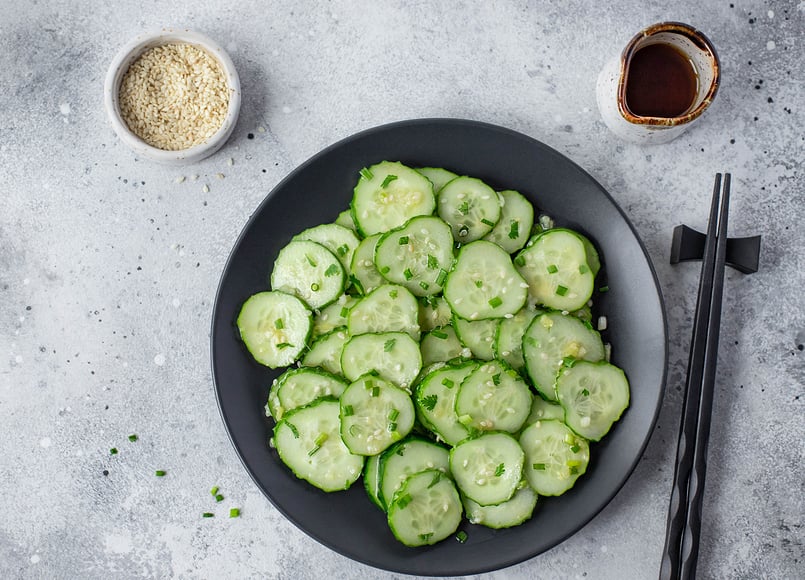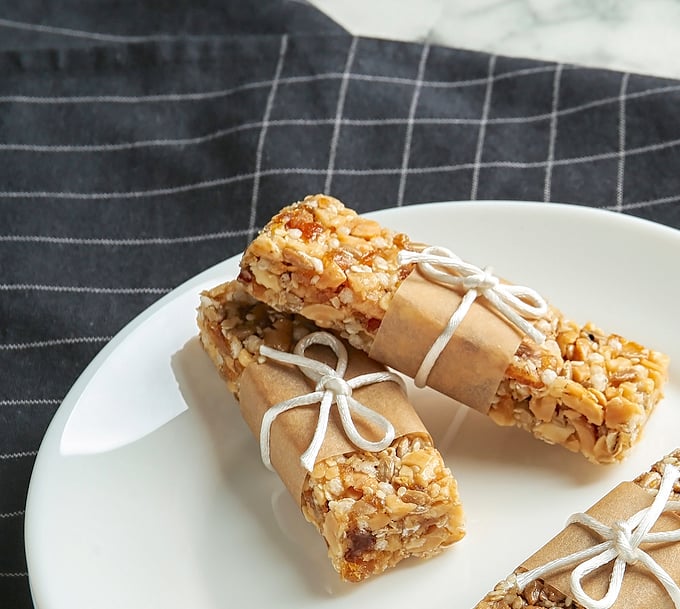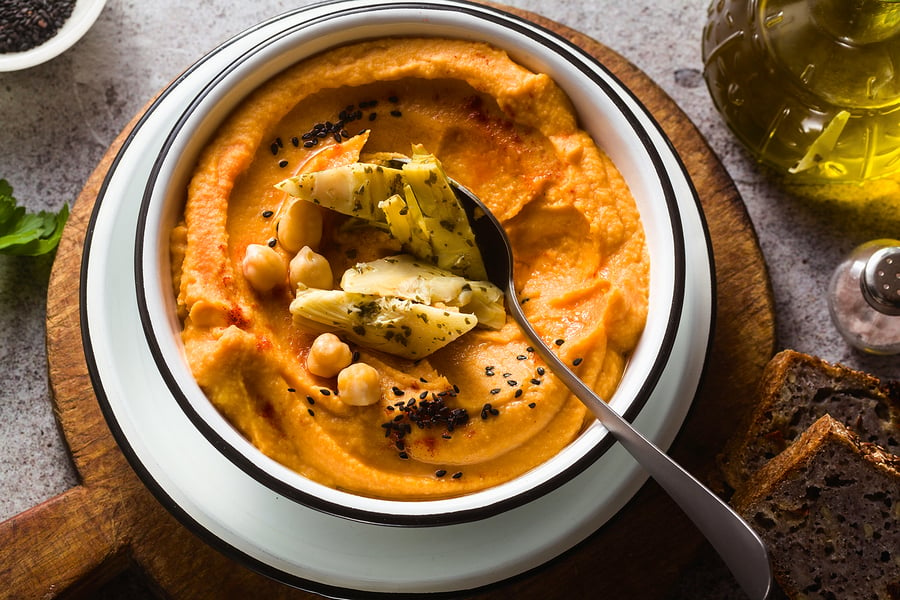Here’s a quick guide to sesame seeds and how to make the most of them, from sweets to savories, with recipes and tips — plus lots of info on tahini and sesame butter.

These tiny seeds, relished in Middle Eastern, Chinese, Japanese, and African cuisines, among others, are worth more than their weigh in usefulness in the kitchen and nutritional value.
The flavor of sesame seeds is mildly nutty, intensifying when ground into a paste (tahini) or into a seed butter. Sesame seeds are also expressed into oil. Light sesame oil isn’t as commonly available as dark (or toasted) sesame oil. The latter is used in Asian cuisines and imparts a delectable flavor and depth.

Buying and storage
When buying sesame seeds, your options are the whole, unhulled variety, which have their deep tan hulls intact. There’s also the more common hulled kind that are off-white.
Black sesame seeds have become more widely available in recent years. These seeds have their hulls intact, so they’ll be a bit richer in nutrients and fiber than their hulled counterparts. Here’s a detailed rundown on the differences between black and white sesame seeds.
Sesame seeds will keep well for many months in a tightly lidded jar in a cool, dry place. To be on the safe side, refrigerate them during the warmer months so they don’t go rancid.
Sesame seeds are available in bulk, in packages, as well as in the spice section of supermarkets and specialty stores. If purchasing in a spice jar, you’ll likely get a smaller quantity at a larger price. Of course, you cans also buy sesame seeds in larger quantities online.
Nutrition
Sesame seeds are 48 percent fat, with roughly equal parts polyunsaturates and monounsaturates and only a small proportion of saturated fat. One tablespoon contains 1.6g protein and 52 calories. They also contain a significant amount of calcium.
Sesame seeds are valued for their vitamin E content. They are also rich in the minerals iron, zinc, potassium, and phosphorus and provide substantial amounts of the B vitamins niacin and folacin. Here’s more about the health benefits and nutrition of sesame seeds.

How to use sesame seeds
Sesame seeds are well-known for in Middle Eastern cuisine, where they’re the main ingredient in the sesame candy halvah and in tahini (sesame paste), an essential ingredient in hummus — see more about tahini ahead.
An Asian specialties staple: Vegan Asian dishes that have become popular in the West are sesame noodles and sesame tofu or tempeh. Of course, there are a number of non-vegan dishes that highlight sesame seeds, but we need not mention them here!
Sprinkle on everything! Sesame seeds are an excellent garnish sprinkled on almost any type of casserole, stir-fried greens and other vegetables, noodles dishes, grain bowls, and green salads.
Grain topping: Toss a small quantity of sesame seeds into (or atop) simple cooked grains such as brown rice or bulgur or into grain pilafs.
Add to cereal or granola: Use whole sesame seeds in homemade granola or sprinkle a teaspoon or so over a serving of cold cereal.
Big in baking: Sesame seeds are also nice in certain forms of sweet baking, especially cookies, (do I have?) as at topping for sweet quick breads, muffins, yeasted breads (like challah), and crackers.
A well-loved salad dressing: Sesame-ginger salad dressing is a classic, and you’ll find the listings of recipes below.

Do you love seeds? You might also enjoy:
Make your own Gomasio
Gomasio is a tasty seasoning of Japanese origins that combines toasted sesame seeds, sea vegetable, and sea salt, or just sesame seeds and sea salt (such as Celtic sea salt). Or, sometimes garlic is added. The added flavors help to cut down on using pure salt. Here’s are a trio of recipes for you to try:
- Gomasio (Japanese Sesame Seed Condiment) – with sea vegetable
- How to Make Gomasio (no sea vegetable)
- Garlic Gomasio
Recipes using sesame seeds
Here’s a sampling of recipes on this site that make good use of sesame seeds.


Sesame-Ginger Red Cabbage & Carrot Slaw

Simple Asian-Style Sesame-Cucumber Salad


Tahini (sesame paste)
A favorite Middle Eastern food, tahini is a rich paste ground from raw, hulled sesame seeds. Tahini comes in jars or tins. Stir well before using to mix the oil with the solids if they’ve separated. Keep tahini refrigerated once any kind of container is opened.
Because the hull isn’t used in the making of tahini, its nutrients aren’t as concentrated as they may be in whole sesame seeds or sesame butter, but it’s still a food with plenty going for it. Two tablespoons of tahini contain 170 calories, 16 grams of fat, and 5 grams of protein.

Ideas and recipes for using tahini
Hummus and baba ghanouj: Tahini is combined with eggplant to make the classic baba ghanouj, and with chickpeas to make hummus, both delicious dips made be scooped up with pita bread. Many Middle Eastern and vegetarian cookbooks provide recipes for these and other dishes utilizing tahini. Here’s a roundup of Homemade Hummus, 12 Easy and Delicious Ways.
Sesame noodles: Tahini is often used as the main ingredient to flavor cold sesame noodles, an Asian favorite.
Tahini dressings and dips: Add to stir-fried vegetables, plain cooked grains, or to simple steamed vegetables such as broccoli or green beans with a squeeze of lemon juice. Try Avocado and Tahini Dip with Baby Greens.
Tahini mayonnaise: This simple, tangy sauce is excellent as a dip for raw vegetables or as a dressing for pita sandwiches. Combine 1/4 cup each tahini, 1/2 cup vegan mayo, and the juice of 1/2 lemon in a small mixing bowl. Whisk to blend thoroughly.
Boost your vegan burgers: Add a tablespoon or two of tahini to recipes for vegan burgers for extra flavor and a nutritional boost. It’s particularly nice in chickpea burgers.
Halvah: This quintessential tahini confection is surprisingly easy to make at home. Try Halvah, 5 Ways or Salted Chocolate Halvah.
Sesame butter
Ground from whole (unhulled) roasted sesame seeds, sesame butter is an intensely flavored spread. The hulls present in sesame butter make it thicker, grainier, and darker than tahini, which is made from hulled seeds.
You’re more likely to find sesame butter in natural foods stores. It tends to be expensive. You can also make your own: How to Make Sesame Butter at Home
A 2-tablespoon serving of sesame butter contains approximately 180 calories, 6 grams of protein, 15 grams of fat, and all the nutrients provided by whole sesame seeds.
Once opened, sesame butter is best kept refrigerated in warmer months. For easier spreading, let it stand at room temperature for an hour before using. Use sesame butter as an interesting change of pace from peanut butter.
Sesame butter is useful as a spread for bread, crackers, or rice cakes. Try it in combination with strong-flavored fruit butters, such as plum butter, or mix it to taste with miso for a bold, savory spread.
Explore more of this site’s Good Food Guides.

Leave a Reply